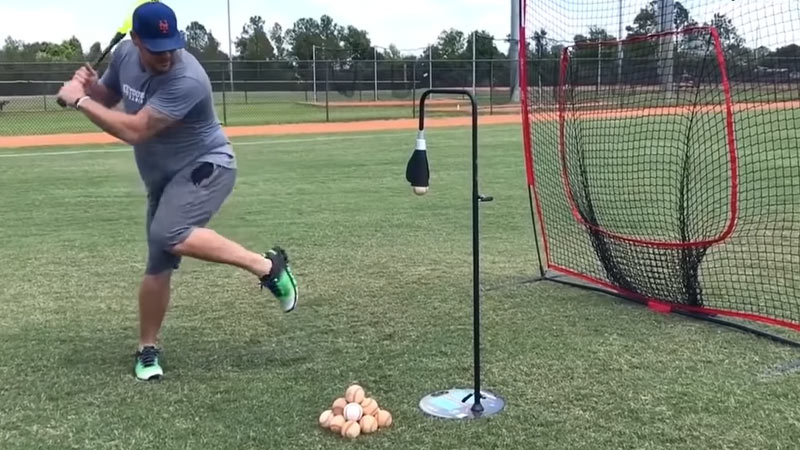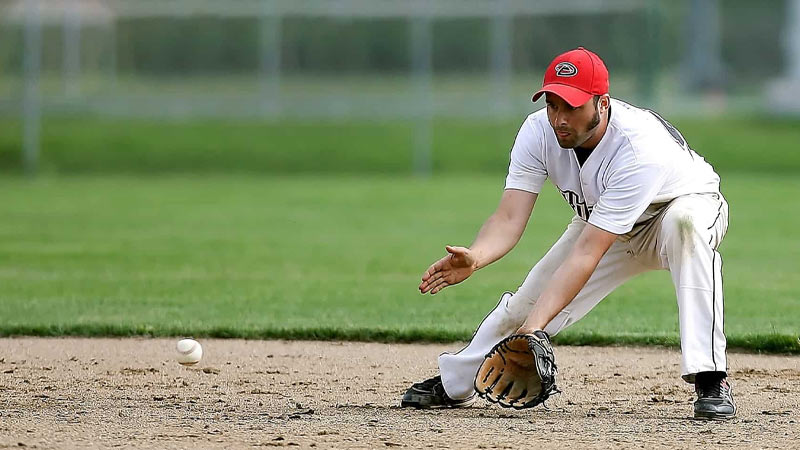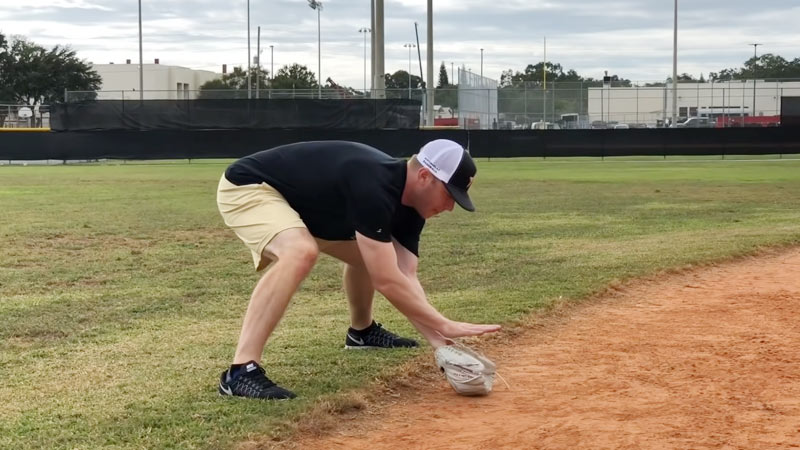Baseball is a sport that requires a combination of skills, including batting, pitching, fielding, and base running. To excel in this game, players need to consistently hone their skills and improve their overall performance. One of the best ways to achieve this is through regular practice and targeted drills.
In this article, we will provide you with comprehensive details on boosting your baseball skills with these top baseball drills list. Whether you’re a beginner or an experienced player, these drills will help you take your baseball skills to the next level.
What Is Drill in Baseball?
In baseball, the term “drill” refers to a specific practice exercise or routine designed to improve a player’s skills and performance in various aspects of the game.
Drills are used by coaches and players at all levels of baseball, from youth leagues to professional teams, to work on specific techniques, develop muscle memory, enhance coordination, and improve overall performance.
Drills can focus on different aspects of the game, such as hitting, pitching, fielding, base running, and throwing. Each drill is typically designed to isolate a particular skill or aspect of the game, allowing players to repeatedly practice and refine their abilities.
Boost Your Baseball Skills With These Top Baseball Drills List
Below here are the 13 most popular baseball drills you need to know about. Let’s take a look.
1. Tee Work

Tee work is a fundamental drill that helps batters improve their swing mechanics, hand-eye coordination, and overall contact. Set up a batting tee and practice hitting balls off it, focusing on technique and aiming for different parts of the field.
Vary the height and position of the tee to simulate different pitch locations.
2. Soft Toss

Source: littleleague.org
Soft toss drills are excellent for developing hand-eye coordination, timing, and bat speed. Have a partner stand a few feet away from you and toss the ball underhand. Focus on hitting the ball with a smooth, compact swing, and try to make solid contact with every pitch.
3. Pitching Drills

Source: littleleague.org
Pitchers can benefit from a variety of drills to improve their accuracy, velocity, and control. Some popular drills include the “Long Toss,” which helps build arm strength and increase throwing distance, and the “Pitching Mechanics Drill,” which emphasizes proper throwing mechanics to maximize efficiency and reduce the risk of injury.
4. Infield Drills

Source: baseballboom.com
Infield drills are essential for developing quick reflexes, fielding techniques, and throwing accuracy. Some effective infield drills include the “Ground Ball Circles,”
where players form a circle and take turns fielding ground balls hit by a coach, and the “Rapid Fire Drill,” where a coach hits consecutive ground balls to challenge fielders’ agility and quick decision-making.
5. Outfield Drills

Outfielders need to focus on tracking fly balls, taking good routes, and making accurate throws. The “Fly Ball Communication Drill” helps outfielders improve their communication skills by simulating game situations where multiple players are converging on a fly ball.
The “Three Cone Drill” is another valuable drill that aids in developing speed, agility, and proper footwork for efficient outfield play.
6. Base Running Drill

Source: stack.com
Base running drills are crucial for improving speed, agility, and decision-making on the base paths. The “First-to-Third Drill” involves practicing the proper technique for advancing from first base to third base, including rounding the bases and reading the coach’s signals.
The “Steal Drill” focuses on improving a player’s ability to get a good jump and steal bases effectively.
7. Live Batting Practice

Source: jsonline.com
Incorporating live batting practice sessions allows players to face live pitching, simulate game scenarios, and work on situational hitting. It helps batters sharpen their pitch recognition skills, adjust to different speeds and locations, and develop a more consistent approach at the plate.
8. Bunting Drills

Source: maxbp.com
Bunting is a crucial skill for players, especially in small ball strategies. Bunting drills help improve bunt technique, accuracy, and decision-making. The “Target Bunting Drill” involves placing targets at different locations on the field, and players must execute bunts to hit those targets consistently.
9. Catcher’s Pop-up Drill

Source: littleleague.org
This drill is designed to improve the catcher’s ability to quickly jump out of their crouch and catch pop-up foul balls near the backstop. The coach or another player hits pop-ups behind the plate, forcing the catcher to react swiftly, shed their mask, and make the catch.
10. Pickoff Drills

Pickoff drills are essential for both pitchers and infielders to enhance their ability to hold baserunners and make accurate throws to pick them off. The “Quick Pick Drill” involves a pitcher repeatedly practicing quick pickoff moves to first or second base, focusing on speed and accuracy.
11. Relay and Cutoff Drills

Relay and cutoff drills are crucial for improving communication and coordination among infielders and outfielders. The “Triangle Drill” involves setting up three players in a triangle formation, with one outfielder, one infielder, and a cutoff player.
The outfielder throws to the cutoff player, who then makes a quick, accurate throw to the infielder, simulating relays and cutoffs in game situations.
12. Hitting off Live Pitching

While tee work and soft toss drills are beneficial, hitting off live pitching is crucial to replicate game-like scenarios. Arrange sessions where pitchers throw live to hitters, allowing them to work on their timing, pitch recognition, and overall approach at the plate.
13. Communication and Team Drills

Source: mlb.com
Baseball is a team sport that requires effective communication and teamwork. Incorporate drills that emphasize communication on the field, such as the “Double Play Communication Drill,” where infielders practice calling for the ball and executing double plays efficiently.
Additionally, team-building exercises and drills that focus on teamwork and trust can help improve overall performance on the field.
Remember, consistency and repetition are key when it comes to drills. Devote regular practice sessions to these drills, and gradually increase the difficulty as you progress.
By incorporating a diverse range of drills into your training routine, you’ll develop a well-rounded skill set and improve your performance in various aspects of the game.
How to Plan Effective Baseball Practices?

Planning effective baseball practices involves careful consideration of various factors to ensure that players receive comprehensive and structured training.
Here are some steps to help you plan effective baseball practices:
Define Goals
Determine the specific goals and objectives you want to achieve during the practice session. For example, you may want to focus on hitting mechanics, defensive skills, or team strategies. Clearly defining your goals will guide your planning process.
Design a Practice Schedule
Create a detailed schedule outlining the different components and activities of the practice. Allocate time for warm-up exercises, individual skill drills, team drills, simulated game situations, and cool-down activities.
Balance the duration and intensity of each segment based on the age and skill level of your players.
Organize Drills
Select drills and exercises that align with your defined goals. Ensure a mix of individual skill development and team-oriented drills to foster well-rounded player growth.
Incorporate a variety of drills to keep players engaged and avoid monotony. Consider the specific needs of different positions and adjust the drills accordingly.
Progression and Difficulty
Plan drills in a progressive manner, starting with basic skills and gradually increasing difficulty. This allows players to build upon foundational abilities and challenges them to advance their skills.
As players improve, introduce more complex drills and techniques to continue their development.
Practice Flow
Consider the flow of the practice session to maintain a smooth and efficient progression. Minimize downtime between drills and transitions by organizing equipment, setting up stations in advance, and providing clear instructions.
Keep players actively engaged and limit waiting time.
Repetition and Reinforcement
Incorporate ample repetition in drills to reinforce muscle memory and develop consistency. Encourage players to focus on proper technique and form during repetitions. Provide feedback and corrections to help them improve their skills.
Incorporate Game-Like Situations
Create drills that simulate game situations to enhance players’ decision-making abilities and situational awareness. Develop scenarios that mirror real-game challenges, such as baserunning situations, defensive strategies, or game-specific scenarios.
Communication and Feedback
Foster open communication with your players throughout the practice. Provide clear instructions, demonstrate techniques, and offer constructive feedback. Encourage players to ask questions, clarify doubts, and actively participate in discussions.
Adaptability
Be prepared to adapt the practice plan as needed based on the progress and needs of your players. Be flexible in adjusting drills, time allocations, and instruction to cater to individual and team requirements.
Evaluation and Reflection
After each practice, evaluate the effectiveness of the drills and overall session. Reflect on what worked well and areas that may require improvement. Use this information to continually refine your practice plans and enhance future sessions.
Remember, a well-structured and organized practice plan can optimize player development and enhance team performance. Tailor your practices to the specific needs and abilities of your players while keeping them engaged, challenged, and motivated.
FAQs
How often should I incorporate drills into my baseball practice?
Drills should be an integral part of your baseball practice routine. Ideally, you should aim to incorporate drills into your practice sessions at least 2-3 times per week. However, the frequency may vary depending on your schedule and level of commitment.
Can I practice baseball drills alone, or do I need a partner or a team?
While having a partner or a team can be beneficial for certain drills, many baseball drills can be practiced individually. For example, batting tee work, soft toss, and pitching mechanics drills can be done alone. However, drills that involve fielding, relays, and game-like situations may require participation from teammates or coaches to maximize effectiveness. Adapt the drills based on your resources, but always make the most of your practice time.
How long should each drill session last?
The duration of each drill session can vary based on the number of drills you plan to work on, the time available, and your level of fatigue. As a general guideline, aim for 15-30 minutes for each drill. This duration allows for adequate repetition and focus on specific skills without becoming overly fatigued or losing concentration.
Are there any specific warm-up exercises before starting drills?
Yes, it’s crucial to warm up before engaging in baseball drills to prevent injuries and prepare your body for the physical demands of the sport. A proper warm-up can include light jogging, dynamic stretching, arm circles, lunges, and rotational exercises to activate your muscles and increase blood flow.
How do I track my progress with baseball drills?
Tracking your progress with baseball drills is essential to assess your development and identify areas for improvement. Keep a record of the drills you practice, including the number of repetitions, performance metrics (e.g., batting average, pitching accuracy), and any observations or notes about your performance.
Bottom Line
That was a detailed baseball drills list for you. Regularly incorporating these baseball drills into your practice routine will undoubtedly enhance your skills and contribute to your overall growth as a player. Remember to focus on proper technique, maintain a positive mindset, and always give your best effort during each drill.
By consistently working on these fundamental aspects of the game, you’ll be well on your way to becoming a better baseball player. So grab your gear, head to the field, and get ready to elevate your baseball skills to new heights!







